Resources
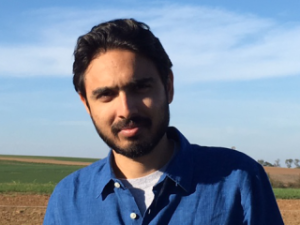
This is the fourth and last installment of a series of posts on the theme of “teaching theory without theory talk” in an introductory course on Islam. To review, I have explored ways in which one might present to students in an introductory course important theoretical arguments (e.g., complicating binaries like tradition/modernity or religion/secular; appreciating the intimacy of discourse, power, and material conditions; interrogating the legacy of colonial modernity in the formation of contemporary categories of life) that are by now commonplace in the study of religion. How might one advance such conceptual tasks without burying students in the often intimidating and prohibitive protocols and operations of theoretical discourse? In the last three posts, I shared my experience wrestling with this challenge at different moments in an introductory Islam course. In this post, I want to take a step back. Rather than reflecting on teaching theory through teaching Islam, I wish to think through some of the theoretical assumptions that often sustain the teaching of Islam within the study of religion. More specifically, I wish to ponder aloud a certain discomfort I have often experienced on the first day of a course, especially the introductory Islam course. On day one, as is common practice among religion scholars, I try explaining to students what the study of religion is and how it differs from theological studies. This usually involves making a list of contrastive attributes. The study of religion (and Islam) is historical, non-confessional, non-normative, and analytical as opposed to the normative confessional study of religion as an object of faith. This sentiment is usefully captured in the formula of drawing the contrast between studying religion and studying about religion. There is obviously much merit in these explanatory gestures. One would not want the academic classroom to become a space for resolving competing truth claims or of passing certificates of normativity and heresy. However, there is nonetheless an underlying secularity at work in this exercise that I find not only conceptually troubling but also a potential roadblock to teaching Islam. To begin with, the act of contrasting the historical, academic, and non-confessional study of religion with the allegedly confessional character of theological studies risks reducing the latter to a caricatured representation. Surely, despite their normative preoccupations, seminaries and madrasas also often engage in analytically sharp and historically informed scholarship, even if their logics of history and critical thinking might differ. Making a conscious and concerted effort to distinguish religion studies from theological studies might have the unintended effect of smugly suggesting the superiority of the former over the latter. “We are cooler than those people who are unable to separate personal faith from scholarly inquiry.” Even if not intended as such, it is hard to imagine this not being among the implicit messages communicated by the assertion of the religion/theological studies dichotomy. Making such a contrast also embraces and replicates the secular/religious binary, which as many scholars have argued, is a very problematic binary. “We the critical historians of religion will undertake for the next fourteen weeks the secular study and inquiry of this religion and these religious subjects.” That is the upshot of the eager disclaimer that the study of religion is not theological/seminary studies. There is an underlying nod to the virtues of secularity at the heart of the promise of historicizing religion. This secular gesture does bring the benefits of absolving a course on Islam from the sins of establishing orthodoxy, encouraging piety, or of promoting confessional bias. But, it also carries certain limitations that are important to acknowledge and engage if not resolve. Let me highlight just one such limitation. The positioning of an introductory course as a non-confessional (read secular) inquiry into Islam can hamper the effectiveness of discussions on the affective and phenomenological aspects of a religion. An important moment in the introductory Islam course that speaks to this point is that of the revelation of Islam to Muhammad. This is a powerful moment. It combines awe, terror, anticipation, physical pain, and marks a permanent cleavage in time and history. But the history of religion approach deflates the power of this moment. Having taken their position as detached (even if sympathetic) observers of a tradition, students are unburdened from the weight of entangling their beings with the experiential registers of the religion. They are absolved of feeling, perhaps even suffering, the mixture of perplexity and wonder that suffuses and accompanies moments like Muhammad's revelation. They might sympathize with such moments or be fascinated by them, but the thick crust of secular historicism makes even the attempt at inhabiting the experience of such moments almost impossible. My point, or perhaps more accurately, my attempt at articulating a less than fully formulated doubt and discomfort, is not a rehearsal of predictable musings on the insider/outsider problem. Rather, I am after the implications and effects of a pedagogical orientation towards Islam that renders it a foreign object of secular historicist inquiry and consumption. Such an orientation, animated by the assumptions and logics of secularity, captured most prominently by the secular imperative of historicizing and desacralizing life, can produce rather deleterious effects. Most notably, it relies on and perpetuates a binary between the enlightened critical investigator and the tradition bound uncritical religious subject who is the former’s object of investigation. In other words, the history of religion approach to teaching Islam is a decisively secular approach that replicates and advances the religion-secular binary. Obviously, recourse to a confessional approach is hardly the solution; that is both untenable and undesirable. Perhaps what is needed is a pedagogical orientation that is thoroughly unaccepting of the religion-secular binary in all its manifestations. Being more critical of the critical historical study of religion, especially when set in contrast to traditionalist theological studies, might be a useful step towards the cultivation of such an orientation.
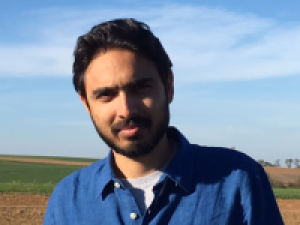
In this blog, I want to continue with the theme that animated my last post “Genealogically Attuned teaching in an Introductory Course on Islam.” To remind, the question I had engaged had to do with the problem of presenting in an undergraduate amenable fashion theoretical insights from the study of religion and the broader humanities. My investment in this question derives from the problem of how one might make in an introductory course on Islam theoretical arguments commonly advanced in humanistic scholarship through strategies that bypass the density of scholarly theoretical discourse. In other words, how to do theory in an introductory course without subjecting students to theory pressure? The last blog dealt with some challenges and prospects for the first day of an Introduction to Islam class by way of some reflections on interrogating the category of religion. Here I wish to briefly think about this problem in relation to more specific thematic units of such a course. First a brief description of the conceptual problem I want to think through here. One recurrent tendency I have observed among students is to regard phenomena such as colonialism and orientalism as historical events consigned to a safely distant past, as belonging to the 19th century neatly separated from their own present. How could this problem of assumed shelter from the violence of colonial pasts and their attached knowledge legacies be addressed in an Introduction to Islam course? How could the persistence of the shadows of colonial power be impressed upon students? The first day of a unit on Sufism presents a potentially profitable moment for such a task. The unit on Sufism (for thematically organized introductory courses) represents a highly rewarding yet challenging stop on the pedagogical itinerary. While providing excellent possibilities of close primary source reading, use of narrative, textual and audio-visual analysis, the danger that students will fall prey to the temptation of viewing Sufism as the stereotypical exotic or eccentric variety of Islam is always all too ripe. The first day of the unit on Sufism can also do some important conceptual work on the interaction of colonialism, orientalism, and Islam precisely by tackling major commonplace stereotypes about the Sufi tradition. As an illustration, let me share some highlights from a lesson plan for this day that I have frequently employed in my intro course. The goal of this class session is to make students think critically about the legacy of colonial knowledge production and Orientalism in the study of Sufism and Islam more broadly. This we try doing by focusing on 19th century Orientalist stereotypes about Sufism and their continuation in contemporary popular discourses on the subject. In a nutshell, some of these stereotypes include: 1) that Sufism is foreign to Islam with Greek, Indic, or Persian origins, 2) that Sufism is opposed to Islamic law and that Sufis don’t care about normative legal obligations, and concomitantly 3) that while Sufism is the exotic, soft, and liberal brand of Islam, Islamic law or the Shari‘a is its harsh, puritan, illiberal other. One can fruitfully show the effects of these Orientalist stereotypes in the present by juxtaposing film with text. More specifically, for this day, I combine discussion on the first chapter of Carl Ernst’s Shambala Guide to Sufism (which they read before class) with the in-class viewing of the first twenty minutes or so of the 1994 documentary I am a Sufi, I am a Muslim. The more recent documentary Sufi Soul by popular writer William Dalrymple is also a good alternative that serves the purpose. In small group discussions, I have students identify and make a list of stereotypes about Sufism in the works of various 18th and 19th-century European Orientalists and colonial officials (such as Tholuck, Elphinstone, Graham) as presented in the Ernst text. As student discussions are winding down, I pop in the documentary. I then ask them to make a note and a running list of any overlap between the Orientalist stereotypes they just discussed and ways in which the narrator of the documentary describes Sufism. The overlap is astonishing. Almost all Orientalist depictions (Sufism has non-Arab origins, it is opposed to ‘orthodox’ Islam, Sufis don’t prioritize ritual practices etc.) are repeated almost verbatim in the documentary. This conglomeration of textual and visual evidence invites students to reflect on traces of powerful 19th century discursive regimes on a popular and seemingly sympathetic documentary a century later. Film and text complement each other, the former amplifying the argument of the latter about the Orientalist reformulation of Sufism. But this much is not enough. In addition to uncovering the problems and persistence of Orientalist narratives about Islam and Sufism, it is also important to have students address the question of how Sufis themselves understand their tradition, especially in regards to Sufism’s relationship with Islamic law. For this, we again turn to the Ernst chapter, especially page 26 that details Sufis’ self-imagination of their tradition in clear, concise, and singularly productive ways. By reading relevant passages aloud in class, we establish the point that in contrast to 19th century Orientalist and contemporary popular stereotypes, the relationship between Sufism and law within the tradition is hardly understood in the form of an oppositional binary. Rather, this relationship is imagined as a hierarchy whereby abiding by the law and its limits represents a prerequisite to progress on the path to divine reality. This hierarchical arrangement is reflected in the rhyming progressive (in a literal sense) formula Shari‘a (divine normative order)-Tariqa (the Sufi path)-Haqiqa (divine reality). Put simply, Sufis do not reject the law and its imperatives. They instead consider it a first step towards higher spiritual refinement. A hierarchy is not the same as a binary. Through this class session, some highlights of which I have outlined above, students in an introductory course can be equipped to interrogate the afterlives of colonial power and Orientalist discourse in the present without being burdened with the weight of prohibitive theory talk. It can also attune them to ways in which a more careful consideration of the logics and textual resources within a tradition can disrupt popular stereotypes and representations about it. Genealogical skepticism is thus usefully complemented with discursive analysis.
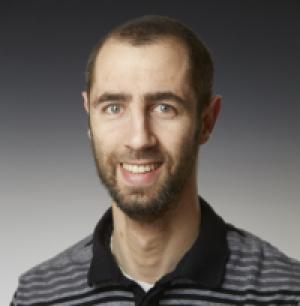
For those of us who teach on the semester system, we face the daunting task of presenting our course in about 15 weeks (and for those of us on quarter systems, about 10!). Among the greatest challenges given this context is to, therefore, decide what can and cannot be left out of a course. If one teaches “Introduction to Islam,” perhaps one aims for a semi-comprehensive historical survey where students learn a bit about hadith, law, Qur’an, theology, dynasties, mysticism—and maybe science, Islamism, and art depending on some variables. Indeed, many textbooks on Islam (books devoted to introducing college students to Islam) treat their topic like this. A fundamental question, therefore: What is the goal for a short undergraduate course on Islam? It’s perhaps a blessing and curse that any given instructor will answer this differently—based on training, institutional context, and personal taste—but I think mostly a blessing because the menagerie of reasonable answers reflects a freedom to make up our minds about approach and content. In this post, I’ll discuss a few outside-the-box approaches that reflect my ongoing struggle with making the best of a short semester. Education as freedom In his article “Liberal Education: Its Conditions and Ends,” David Corey argues that the goal of liberal education is to set us free, to achieve “intellectual freedom or, in a certain quaint sense of the word, ‘spiritual’ freedom” (2014: 195). I can jive with this, and taking a cue from JZ Smith, “there is nothing that must be taught, there is nothing that cannot be left out” of a religious studies course (2012: 13)—which seems to point to freedom as a pedagogical strategy as well. What I interpret from Smith’s prescription is that courses are short, so comprehensive surveys are false gods, in a sense. In an intro to Islam course, why, for example, would attention to a scholarly monograph on the Qur’an, prove more valuable than focusing on episodes from “Little Mosque on the Prairie”? In terms of textbooks, at least, I’m not aware, unfortunately, of any that give attention to “Little Mosque on the Prairie,” so an overreliance on textbooks could also limit the freedom of the instructor to substantively explore outside-the-box sorts of topics. Carl Ernst even notes in Following Muhammad that he hates textbooks for similar reasons; I wouldn’t go that far, in part given my distaste for the H-word, but I strongly sympathize with the sentiment. So if instructors wish freedom for their students, and hope to enjoy a comparable freedom through course design, are we talking about nothing more than a whimsical selection of material? No. It’s not whimsical because I presume, for the sake of argument, that most Islamic studies professors have reasonable training in their respective subfields. On top of that, Islamic studies is not a compartmental, marketable skill, generally speaking—which is why I’ve become increasingly persuaded by Smith’s emphasis on the nothing that cannot be left out. I actually don’t think that’s entirely true: if my course, entitled “Islam,” focused on, say, the question of whether Obama is Muslim (a totally reasonable thing to focus on in said course) to the exclusion of studying Qur’an or hadith, then I should expect to run into some legitimate problems of credibility—from students, colleagues, and my institution. But one should also note that drawing attention to Obama’s religion in light of political realities could uniquely intrigue and teach students. Freedom to surprise students Although I do spend more time in my courses focusing on the Qur’an than on Obama’s public commitment to Christianity, I can’t be sure what will impress students more, years after the class is over—that the story of Khidr is super interesting and weird, that Thomas Jefferson may have read it in Arabic, or that 30% of Americans actually think Obama is a Muslim. Questions of Obama’s religion (or attention to “Little Mosque on the Prairie”), moreover, address critical contemporary questions of Islamophobia, racism, and immigration—topics that could take a bit more creativity to excavate from Moses and Khidr. But can we have it both ways, focusing on Muslim sitcoms as well as the Qur’an? Absolutely, but we still have to prioritize, and if we include one thing we’ll probably have to exclude something else. It’s a balancing act at the end of the day and each of us will rightly navigate things differently. As much as students may find reason to take interest in Obama’s religion—and the story of Khidr—the topic of drugs usually catches their attention as well. And the histories of coffee, alcohol, and qat all squarely tie into broad global discourses such as the consequences of intoxication, state law and sharia, and capitalism. Because I spent a summer in Yemen, and because college students already have a stake in coffee and alcohol, these three substances make regular appearances in a weeklong unit on drugs in Islam. After reading an entire book about the subject—Tripping with Allah, by Michael Muhammad Knight—I ran into a compelling erotic scene involving a vision of Ali and Fatima during Knight’s experience with ayahuasca-DMT (one of the most powerful psychedelics known to science). So I included the excerpt in my “Islamic Mysticism” course last semester. One student memorably lamented her foreseen absence on the day we would discuss Knight’s chapter, writing, “I am disappointed I will be missing today’s discussion of our very weird reading.” Beyond the edutainment factor, the chapter with the erotic scene, like much of Knight’s writing, points clearly to other big questions about Islam, such as Sunni-Shi‘i divides and the boundaries of orthodoxy. So as much fun as it would be to assign the excerpt to students for shock value alone, my pedagogical justification lurks steadily under the surface. Conclusions In my own context, I teach religious studies courses at a college with very few RS majors (currently two, to be precise). As part of the core curriculum, however, students must take at least two courses in my department. Although I always welcomed the challenge of teaching students who are there “because they have to be,” and similarly always valued a liberal arts education, it was not always clear to me how to implement my vision of the liberal arts into my courses. I’ve felt stuck in the ostensibly impossible expectation to teach a survey. What I have increasingly come to ask, though, is what kind of impression my course will leave on students years down the road. And as I continue to ask this question, I become increasingly convinced there’s precious little that cannot be left out of curricula in my courses on Islam. If the goal of learning in my courses is to cultivate intellectual freedom, then is it not only appropriate but even desirable to reflect my own engagement with intellectual freedom, synthesis, and experimentation (cue the DMT jokes) in the syllabus and curriculum itself?
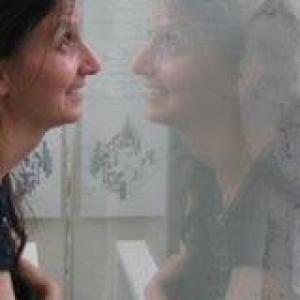
After teaching an introductory course on Islam for over ten years I still am fascinated that most students are unaware of what Sufism is and how Sufism has influenced Islamic metaphysics, societies, cultures, histories, arts, sciences, and trade. In addition to asking myself “Why is there such a lack of knowledge about Islam and Muslim societies?” I have also often asked myself, “Why is there such a disconnect in the minds of students when it comes to Sufism and Islam?” For this current blog and the two that will follow in the Autumn months, I will share some thoughts about teaching Sufism and contemporary Sufism. As readers of the Teaching Islam blog can attest, teaching and writing are interconnected. Many of us write books and articles to use as tools for our classes. Just this past summer, I completed with my co-author, Dr. William Rory Dickson, an introductory textbook on Sufism entitled Unveiling Sufism: From Manhattan to Mecca (available next year through Equinox Publishers). I also am currently writing with my co-authors Dr. William Rory Dickson and Dr. Merin Shobhana Xavier a manuscript entitled Contemporary Sufism: Piety, Politics, and Popular Culture (available next year through Routledge Publishers). The structure, approach and content of these books have influenced my teaching on Sufism, and my experiences in the classroom have influenced my writing. When teaching on Sufism, I find it helpful to “meet students where they are” with Islam, which means starting with the here and now. One way of doing this is to utilize a genealogical framework, in which the student begins to learn not with the historical past, but with the contemporary present: with the diversity of living Sufism in North America today, and ways in which Sufis feel pressure from “both sides” – from non-Muslims and Muslims alike, albeit for different reasons. Taking this approach enables the teacher to explore the growing anti-Muslim, post-9/11 sentiment among North Americans, as well as the intensification of anti-Sufi sentiments among some Muslims (explaining, for example, why Muslim extremists are destroying Sufi shrines). Students then can also examine the different interpretive tendencies emerging among Sufi communities in North America, including universalist tendencies that understand Sufism as something not limited to Islam, as well as more traditionalist perspectives that assert Sufism’s necessary connection to Islamic practices and laws. In addition, the students can learn Sufism’s remarkable influence on North American art and culture, notably through the 13th century Sufi personality, Jalal al-Din Rumi, whose poetry has inspired a variety of different tributes and interpretive expressions, in visual art, yoga, social activism, dance, music, and even in the restaurant and café business. By beginning with issues and themes found in the 21st and 20th centuries, students are then offered the complexities of Sufism as we collectively move deeper through time and space, journeying through a variety of historical, religious, political, and cultural contexts, further delving into the past, and closer to the “origin” of Sufism. This genealogical framework enables the student to understand the patterns of connection between contemporary manifestations of Sufism and past realities from, the bustling metropolis of 21st century Manhattan, to colonial Algeria, through medieval Delhi and Istanbul, back to Baghdad and ultimately Mecca – the birthplace of Islam and its mystical tradition. In addition to using a genealogical framework, it is important to help students explore Sufism as a multidimensional phenomenon. Sufism has influenced Muslim philosophy and metaphysics, but also politics, art, and culture in each historical period. Utilizing particular Sufi figures, movements, places, artistic expressions, or philosophical views, the student develops a richly contextualized appreciation of Sufism. For example, one teaching exercise that I have used is to compare the tradition of wandering mendicants or dervishes of Islam to the leaders of the medieval imperial courts. In such a comparison, I like to share with students the symbolic significance of specific items from material culture. For example, I like to bring to class a very elaborate kashkul from Lahore, Pakistan, as well as miniature paintings of medieval dervishes from Turkey and Iran. Another consideration when teaching on Sufism is to consciously integrate the contributions of women to Sufism, as well as the diversity of Sufism in different regions of the world. In order to avoid reducing the role of women to a subject for one class session, it is important to use women as examples in each historical era, drawing out numerous examples of Sufi women who have been engaged in politics, philosophy, arts, etc. Additionally, it is easy to use illustrations and case studies from the Middle East and South Asia, but it also is essential to help students explore Sufism in all regions of the world, especially Africa and Southeast Asia. There are many different ways to enliven the teaching of Sufism and to make the subject speak to contemporary students who enter the classroom with diverse interests and preconceptions. By engaging current concerns as well as pop culture manifestations of Sufism and then working backward in time toward the point of origin, it is possible to enable new ways of connecting with the subject matter. Such an approach also facilitates the introduction of perennial debates about Islam and Sufism in relation to current controversies, demonstrating continuity as well as change and diversity in Sufism throughout the centuries and opening student’s minds to Islam’s rich and varied cultural, intellectual, and spiritual heritage.
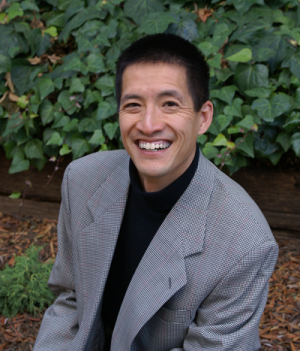
Those of us who spend our leisure time watching the Tennis Channel are guaranteed to have seen numerous episodes of the marketing promotion called, “Bag Check,” where the top players reveal, one item at a time, what they carry in their huge “clearly labeled” tennis bags. Even though we realize that we are marketing targets, there is something very compelling about analyzing the contents of the bags of these remarkable athletes, and seeing and hearing about what they have decided they wanted access to when they are out on the court during these high-stakes matches toward which they have invested so much of their time and energy. Anybody who has seen me on the court is likely to have very little interest in the contents of my tennis bag, but, as a teacher, this image came back to me as I read several essays written about education and pedagogy in the 1980s and the 1990s, by noted scholar of religion, Jonathan Z. Smith, in which he talked about his practice of spending time in all of his introductory courses to “unpack” his syllabi. Before getting into each major part or section of a course, Smith would explain to his students what, among various options, he chose to focus on, as well as why he made those choices. According to Smith, he did so to show students that a syllabus is always already a constructed argument; talking about how and why he constructed his course in class offered students an (additional) occasion to reflect on how certain judgments were made and how those very judgments might lead to particular implications or consequences. There was, for Smith, also a larger context for this practice. The introductory courses he was describing were all taught to undergraduates. Smith was transparent in explaining that these introductory courses of his were so-called “service” courses. That is to say, students who took these courses usually took them to satisfy their general distribution requirements; they were not taking them as majors in the study of religion. (Even in the early 1990s and at the University of Chicago, the number of religious studies majors was already rather small.) As a result, Smith came to the realization that teaching students disciplinary content and disciplinary methods of religious studies should not be his primary goal. Instead, he aimed to use these introductory “service courses” to help students think and talk about interpretation and argumentation. In other words, whatever content he chose to address in his introductory courses, including his explanation of his syllabus, functioned primarily as case studies to illustrate the reality of multiple interpretations and hence the inevitability of argumentation and adjudication. Why? Because as a literary scholar, Gerald Graff, has argued in his 2003 book, Clueless in Academe, learning to perform, engage, and analyze argumentation is what the academy and education should be all about. Smith went on to suggest that as a teacher, he would not mind if his students did not remember much about the content of his “service courses”; what Smith wanted from his students in these courses was for them to learn and develop the capacity to interpret and argue, as well as the ability to evaluate different interpretations and argumentations. In fact, since most doctoral students in the study of religion end up teaching introductory courses to undergraduates, Smith proposed that doctoral programs in religion should require every student to submit a syllabus with a written rationale for every element that had been included in the course design. (For the same reason, Smith would also like to see more faculty members who supervise doctoral students in religion participate in, rather than being “protected” or “relieved” from, teaching undergraduate introductory courses.) Since moving three years ago to join the Religious Studies Department of a Jesuit liberal arts college, I have found a new and deepened appreciation for many of Smith’s insights. Like most religious studies departments in colleges and universities, mine is mainly a so-called service department, so my courses, especially my introductory New Testament course, are seldom filled with religious studies majors. While a number of them may have chosen to take a New Testament course because of their Christian upbringing, some are also enrolling simply because they have to do a class on religion and mine happens to fit their schedule. For the reasons Smith articulated, I have also changed my introductory New Testament course to focus less on disciplinary content and more on honing students’ interpreting and argument-making skills. My “unpacking” of the syllabus, however, has so far been limited to the first class session of a semester and involves a quick rundown of what we will do and what I will require, but I have never taken the time to acknowledge and to explain—that is, to argue—why we should do what we do and why I should require what I require. Looking back, this is rather lamentable, as I know, even when I was teaching graduate students in a seminary, that scrambling to cover every New Testament book or letter in a semester-long “introduction” (i.e., in approximately 40 hours) would be pedagogically helpful neither to me nor my students. I like the idea of disclosing my deliberations about the materials we will engage, and the approaches we will take with that material right at the outset of the class, not just as a matter of routine housekeeping, but as an example and exercise of the kind of thinking and learning that will follow throughout the semester. Doing so can display the complexity, the difficulty, and the responsibility of making informed but interpretive decisions of what to include and exclude, what to adopt and what to abandon in a world that seldom has neat and clean “answers.” Perhaps it is time also for you to do a bag check: What’s in your bag?
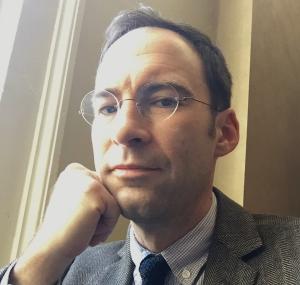
Caleb Elfenbein Assistant Professor Grinnell College The core learning goal of my introduction to Islam is that “Islam” is not a thing. Islam does not say anything. Islam does not do anything. Islam holds no power over anyone. Given the incredible diversity across time and space that marks the practices
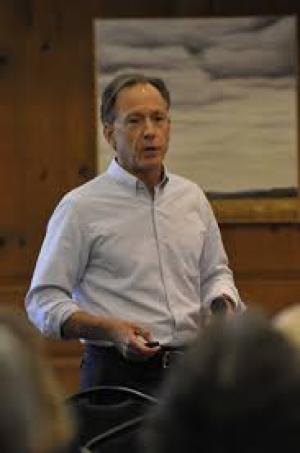
Jeffrey T. Kenney Walter E. Bundy Professor of Religious Studies DePauw University Many Islamicists, specialists in Islam, talk about the challenge of teaching Islam in a post-9/11 world, a world where the War on Terror (WOT), political chaos in the Middle East (exacerbated by the WOT), and global jihadi violence.
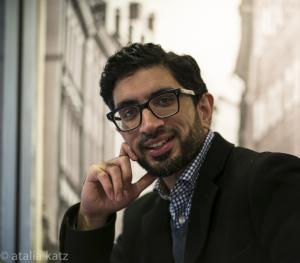
Youshaa Patel Assistant Professor of Religious Studies Lafayette College These days, Islam is no stranger to controversy. Although we may deplore the mainstream media’s deliberate sensationalization of Muslim conflicts, as professors we can also exploit conflict in the classroom to help our students achieve their learning objectives. Many of my.